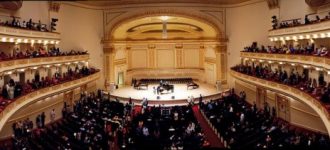A few facts about Grand Central Terminal: It’s the second busiest train station in North America, after its loathed cross-town sibling, Penn Station. It’s also the 10th most visited tourist attraction in the world.
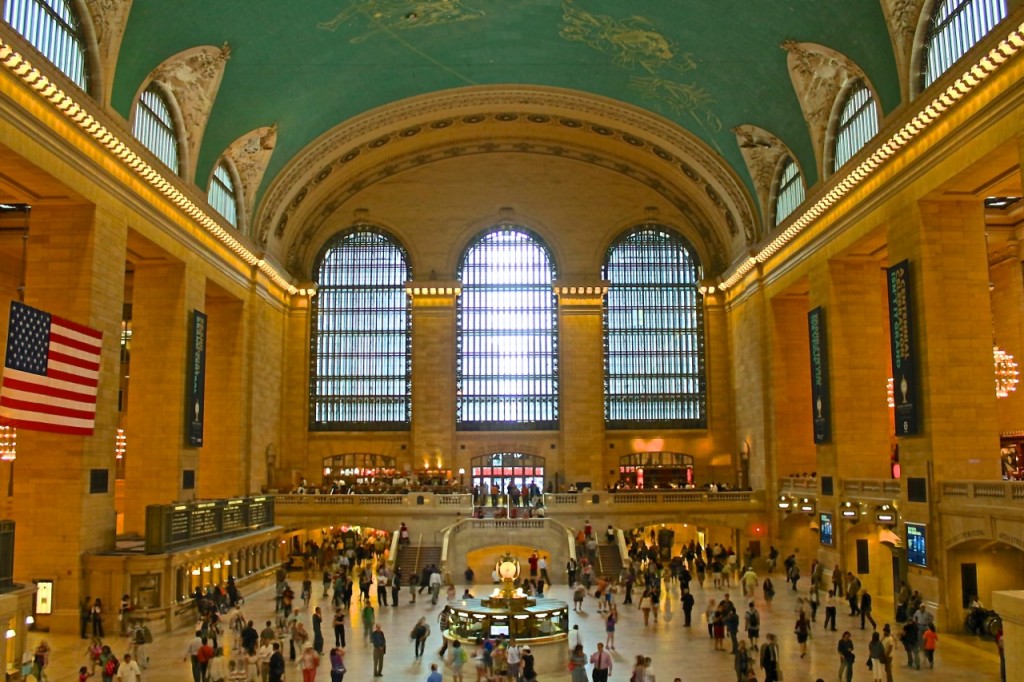
A Few Quick Facts
The iconic Grand Central Oyster Bar, located in bowels of the station, shucks two million bivalves per year. The Beaux-Arts station is the fourth most photographed attraction in New York City. The station has 44 platforms, the most of any train station on the planet. In 2018, there were nearly 22 million visitors to the station, excluding railway and subway passengers.
But beyond statistics, Grand Central Terminal, or as it’s commonly referred to, Grand Central Station, is a beloved marvel and the most famous and storied train station on the planet.
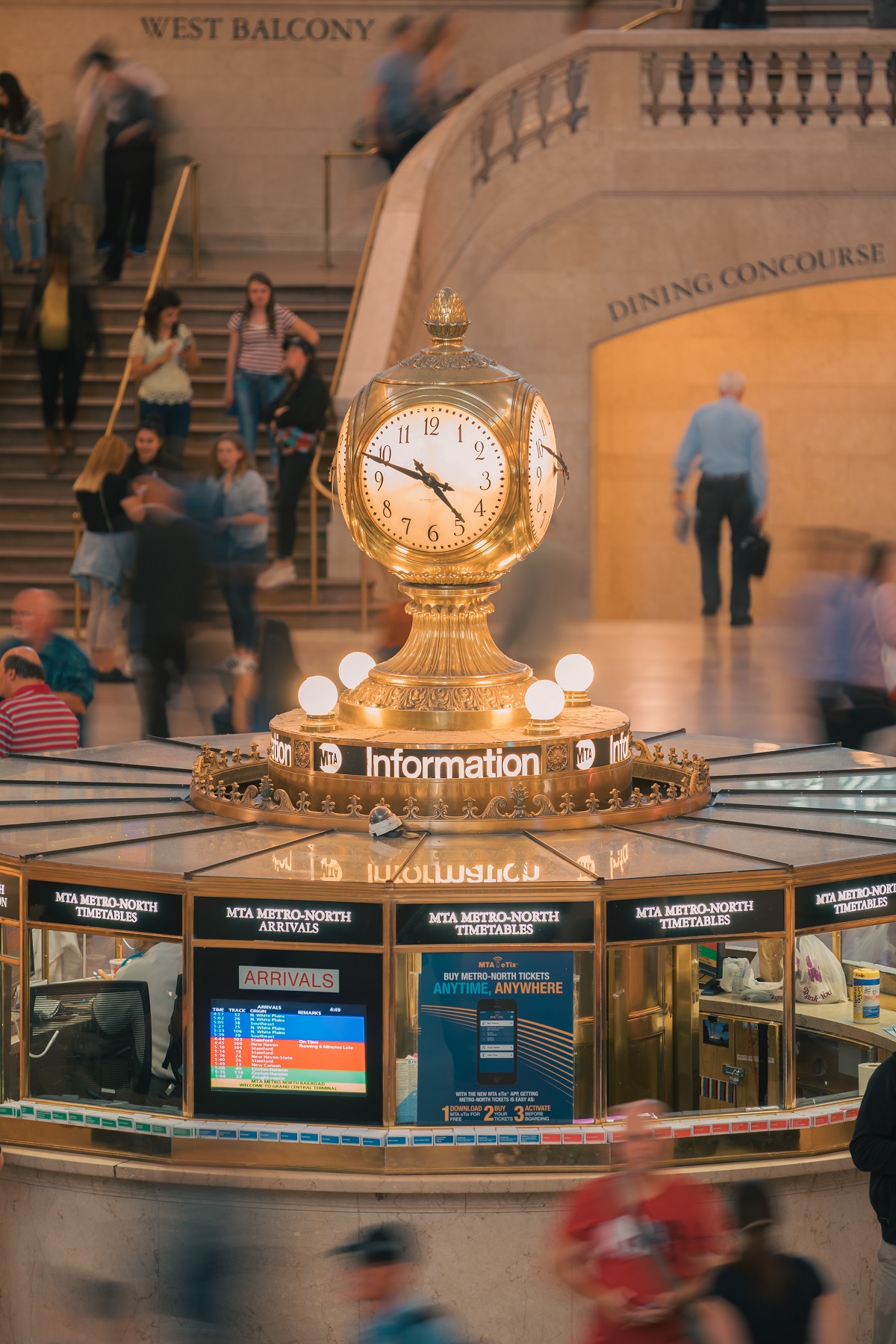
Grand Central Station’s History
The roots of Grand Central go back to 1867 when railroad magnate Cornelius Vanderbilt bought the Hudson River Railway and New York Central Railroads and wanted to unite them with the Harlem line via a central railway station in Midtown Manhattan. And the first incarnation was born. But as the city grew, so did the need for an even grander station. St. Paul-based architecture firm Reed and Stem won the competition to design the terminal.
Architecture
Authorities, though, were concerned that Grand Central would not appear grand enough. So, they hired a second architecture firm, Warren & Wetmore, to design the huge three-arch facade, complete with its now-iconic clock. To add some flourishes to the interior, the architects hired Parisian artist Sylvain Saliéres to create bronze and stone carvings, including sculpted acorns and oaks, symbols of the Vanderbilt family.
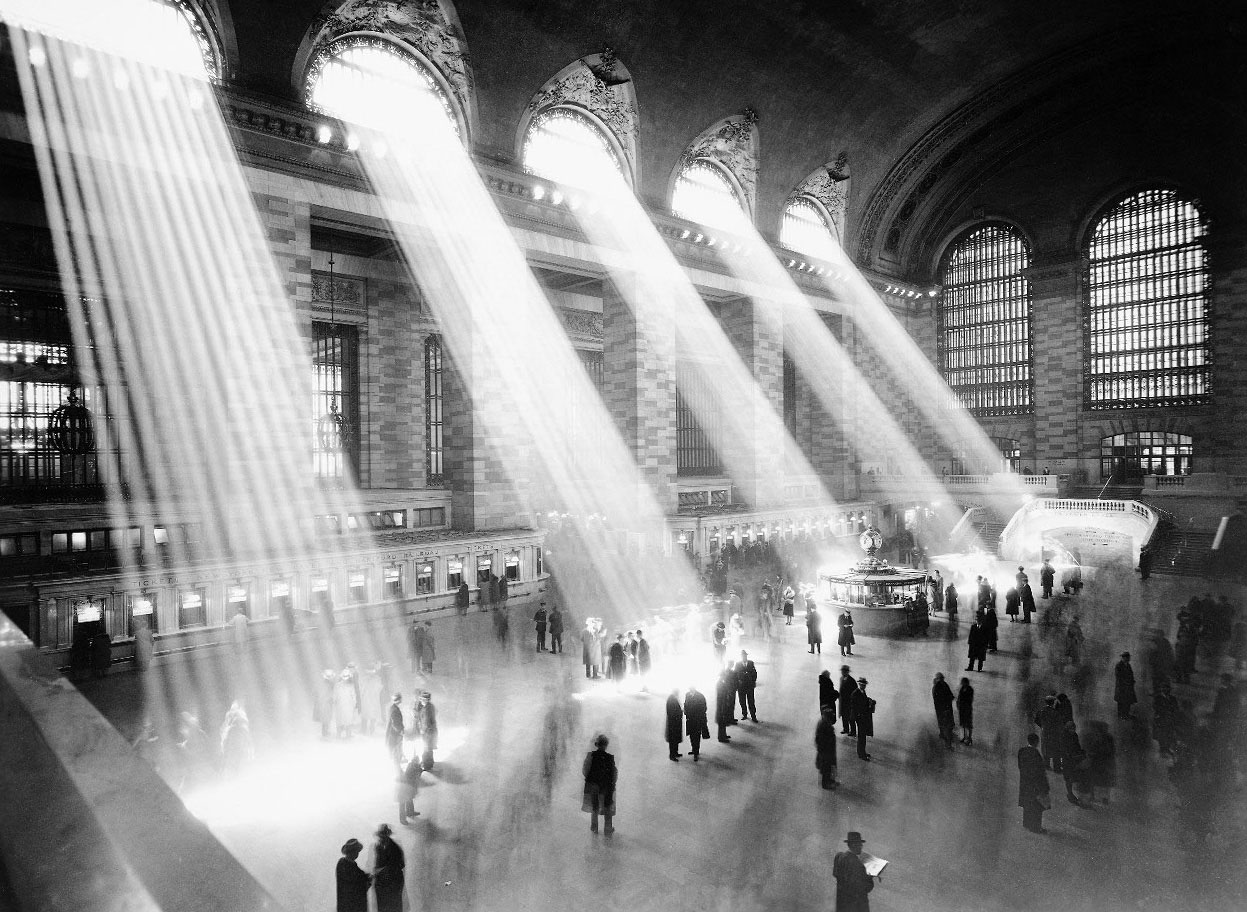
And so was born this Beaux-Arts beauty in 1913. The gorgeous Gilded-Age monument became a splendid gateway to the Empire City, the metropolis at the center of the world. It’s hard to imagine now, but during the first half of the 20th century, long-distance train travel was a glamorous event. So much so that when the 20th-Century Limited train would arrive from Chicago every day, workers at Grand Central would literally put out a red carpet for travelers exiting the train. It was a truly grand entrance to America’s greatest metropolis.
Good-bye to Grand Central?
Things weren’t always so rosy at Grand Central. In 1947, the height of traffic at Grand Central, there were 65 million people coming through the station every day. But with the jet age taking off and car ownership rising (along with the building of the Interstate Highway System), the station fell into disrepair. There was serious discussion about razing the station and building a skyscraper in its place, similar to the unfortunate fate of Penn Station in 1963.
A proposal to build an 80-story skyscraper designed by famous architect I.M. Pei was floated and ultimately rejected. On September 11, 1976, some Croatian nationalists planted a bomb in a coin locker in the station. The bomb was not disarmed properly, and the explosion killed one bomb squad specialist while injuring three NYPD officers.
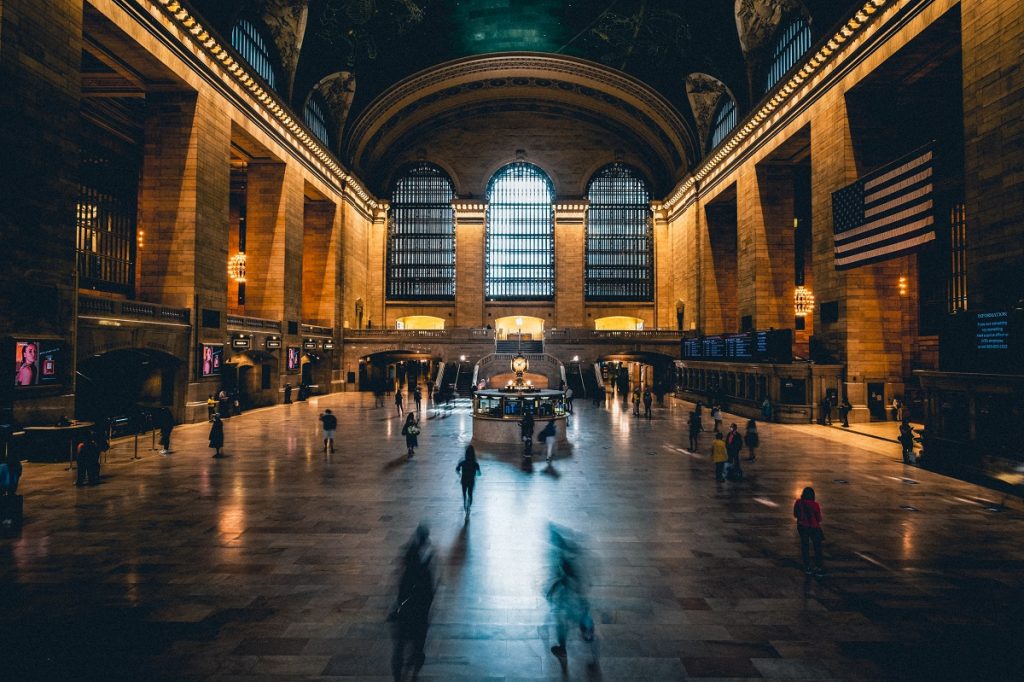
In the mid-1990s, the station underwent a $113 million renovation. The biggest surprise of the renovation was the discovery of the painted skyscape and constellations on the ceiling of the Main Concourse.
Grand Central in Pop Culture
Speaking of stars, Grand Central has starred in many films and TV shows in its almost 110-year existence. Some of them include “The French Connection,” A Stranger is Watching,” “North by Northwest,” “Carlito’s Way,” “Armageddon,” “The Girl on the Train,” and “Revolutionary Road,” among many others. It’s also been a part of several classic novels, including J.D. Salinger’s “Catcher in the Rye” and “The House of Mirth” by Edith Wharton.
Grand Central has captured the excitement and imagination of the general public not only because of its beautiful monumental design and its soaring interior, but also because it’s a relic, a symbol of a time long lost when people traveled differently, lived differently, and perhaps had a different worldview than 21st-century humans.
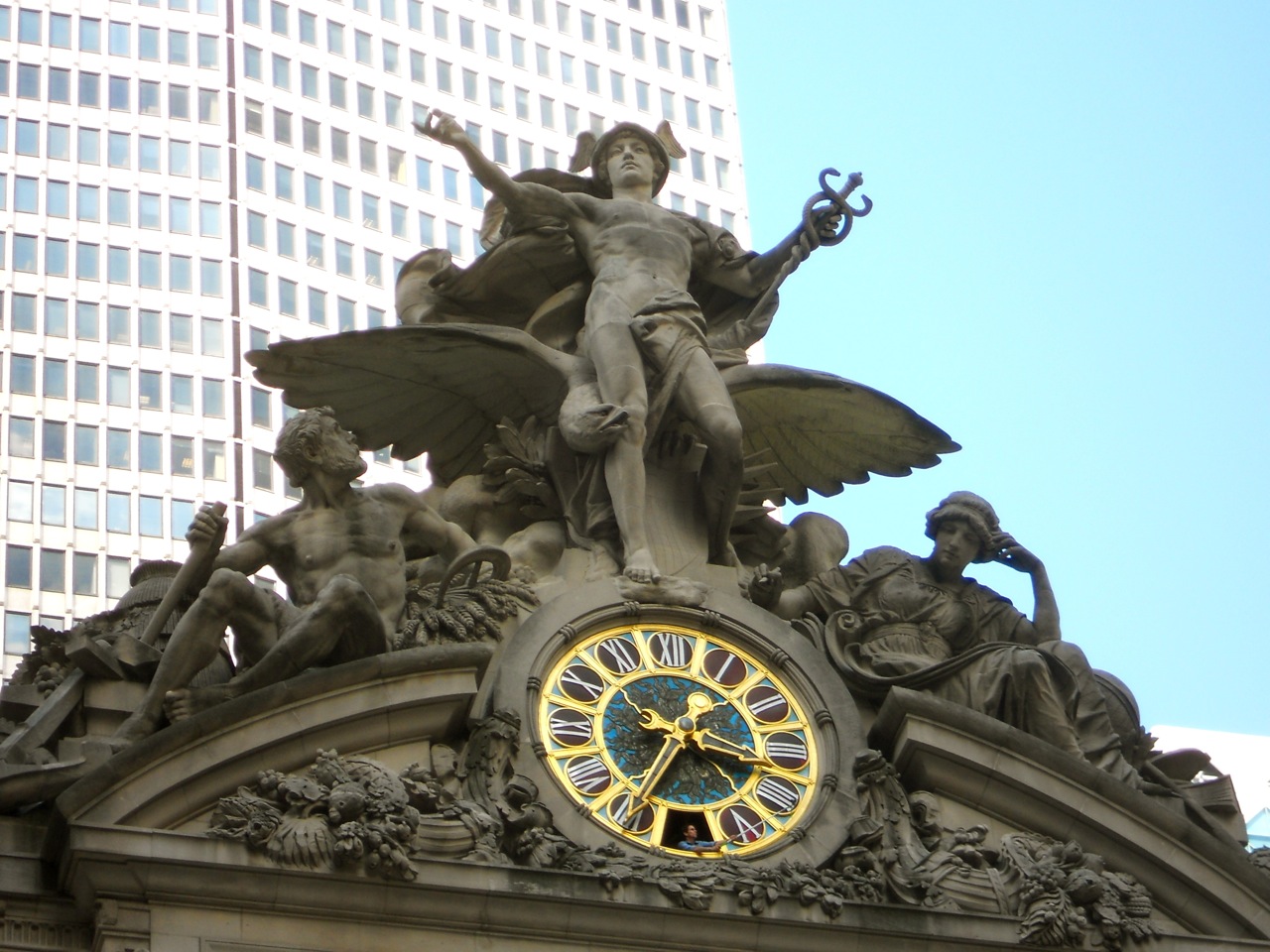
A Brief Grand Central Station Tour
If you’re near Grand Central and have a spare hour or two, here are some of the sites to see at one of the world’s great train stations:
Tiffany Clock and South Facade
Stand at the intersection of East 42nd Street and Park Avenue and prepare to be blown away by the gargantuan facade of Grand Central. The statues of Greek gods Mercury, Hercules, and Minerva represent speed, strength, and intellect, respectively. The 14-foot clock is the largest example of Tiffany glass on the planet.
The Whispering Gallery
Located beneath the Main Concourse, the famed Whispering Gallery is bedecked with Guastavino tiles and sits next to the Grand Central Oyster Bar. This intersection of pathways has otherworldly acoustics; two people can stand in separate corners and whisper something, and it will likely reach the other person. Why not give it a try?
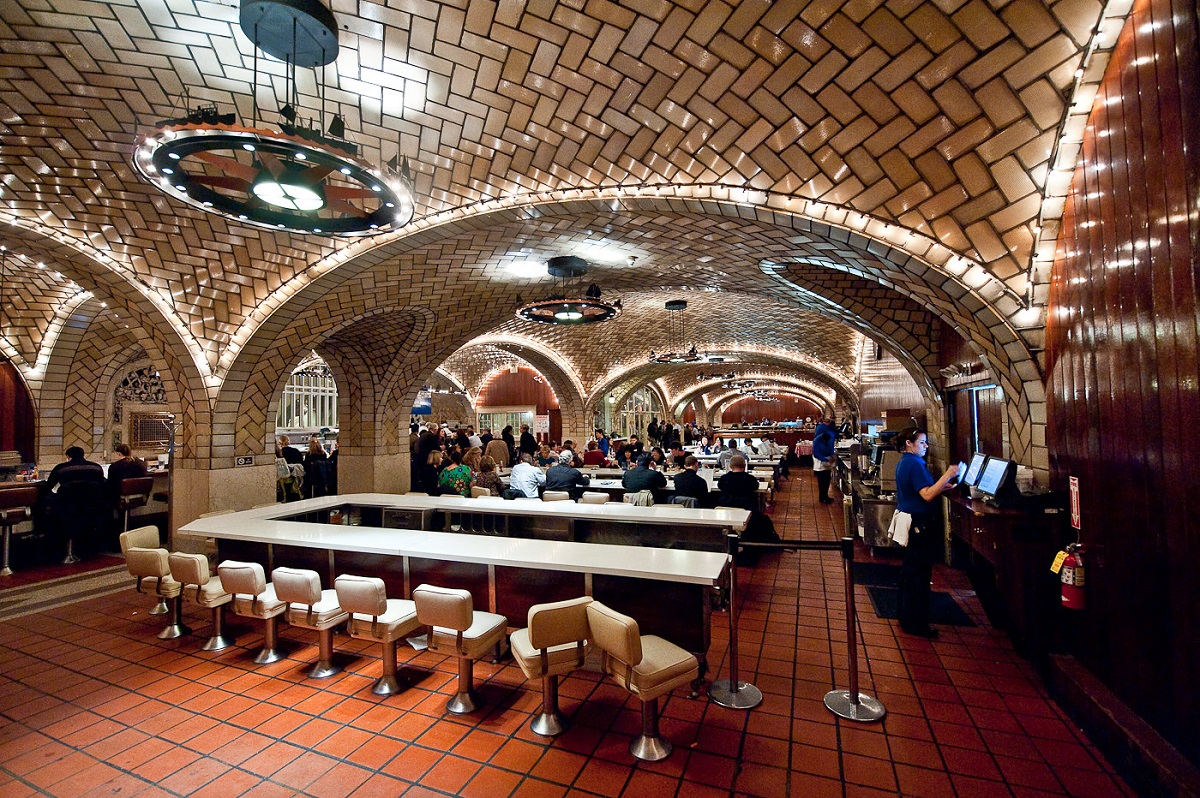
Related Reading: Our friends at Devour have put together a guide to help you map your way through Grand Central Station’s best restaurants.
Information Booth Clock
Situated smack in the center of the Main Concourse is the iconic clock that is the most popular meeting point in the station. The opal glass clock is valued at over $20 million. At the information booth, it’s estimated that every day at least 1,000 questions are asked.
The Main Concourse Ceiling
Inevitably, every visitor to Grand Central who isn’t rushing to a train, is going to end up standing in the center of the Main Concourse staring up at its soaring ceiling bedecked with 2,500 stars and constellations designed by French artist Paul César Helleu.
If you spot the crab, aka Cancer, there’s a small, dark brick next to it. This small black patch is a reminder of what the ceiling looked like before the station was renovated in the 1990s. It was originally thought that the brick became black, like all of the pre-renovated ceiling, because of soot from the trains. It turns out, though, that the dark-hued brick is seventy percent stained with nicotine from a time when a majority of people in New York smoked and huffing and puffing was allowed inside the station. The remaining brick is a testament to the excellent job the restorers did.
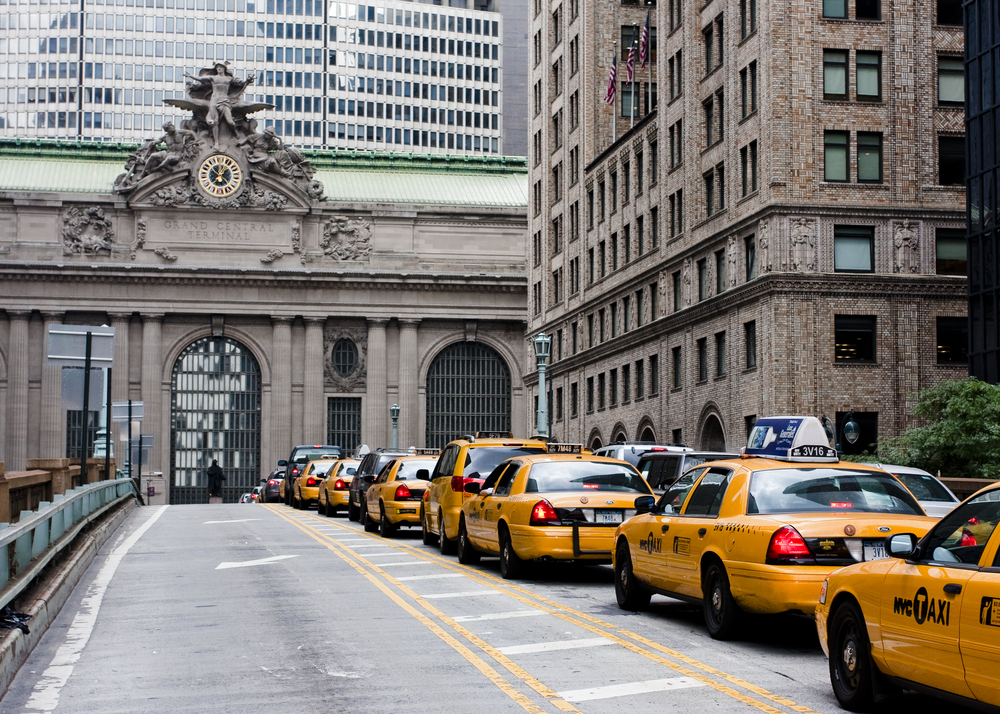
Take a Tour: The Best Way to Experience Grand Central
If you want to experience Grand Central as more than just a train station, there’s no better way than joining the Grand Central Terminal Tour with Walks. This expertly guided tour takes you far beyond the main concourse, revealing hidden passageways, fascinating secrets, and the incredible stories woven into the station’s very walls. From the famous Whispering Gallery to the opulent Vanderbilt Hall and the mysterious track 61, you’ll uncover the marvels and mysteries that make Grand Central a true New York icon. Whether you’re a first-time visitor or a local who’s passed through a thousand times, you’ll see the terminal in a whole new light.
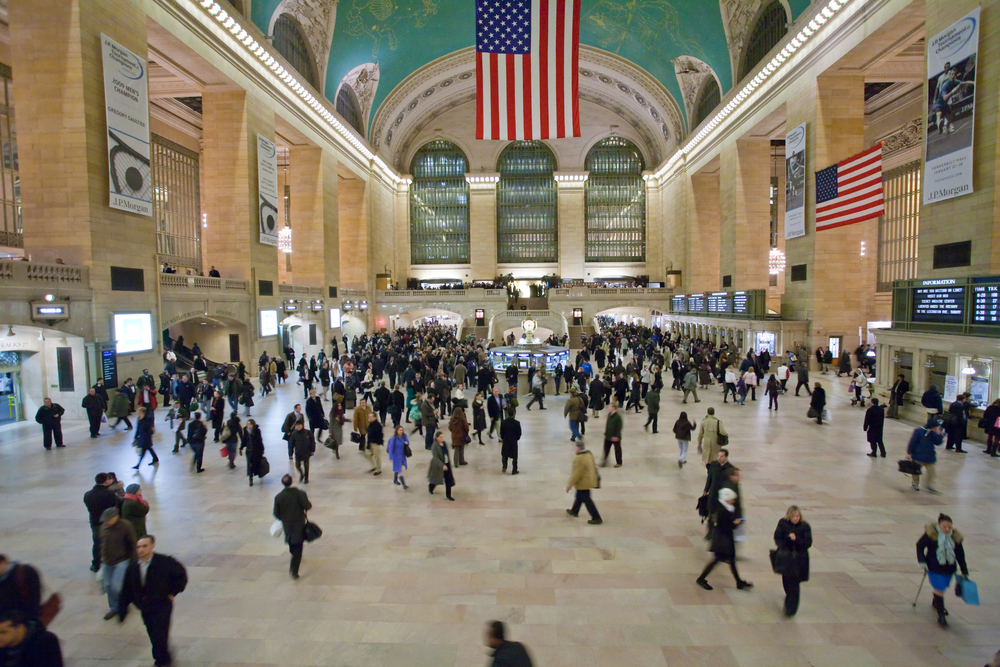
FAQ about Grand Central Terminal
How many platforms does Grand Central Terminal have?
Grand Central Terminal boasts 44 platforms, more than any other train station in the world. These platforms serve 67 tracks and span two subterranean levels.
What is the famous Whispering Gallery and where can I find it?
The Whispering Gallery is a unique architectural spot near the Grand Central Oyster Bar. Thanks to its tiled arches, a whisper spoken in one corner can clearly be heard diagonally across the gallery. It’s located on the lower level, just outside the Oyster Bar restaurant.
Can you visit Grand Central Terminal if you’re not taking a train?
Absolutely! Grand Central is open to the public and welcomes millions of visitors every year, whether you’re there to catch a train, dine, shop, or simply take in the breathtaking architecture and hidden secrets.
What’s the story behind the Main Concourse ceiling?
The ceiling of the Main Concourse is painted with a spectacular skyscape of constellations, originally designed by French artist Paul César Helleu. During renovation in the 1990s, a small dark square was preserved as a reminder of how stained the ceiling became from decades of cigarette smoke—an evocative symbol of the station’s storied history.
Update Notice: May 22, 2025
Want to learn even more of this station’s best-kept secrets? Join our expert guides for an in-depth Book your Gran Central Terminal Tour here.

